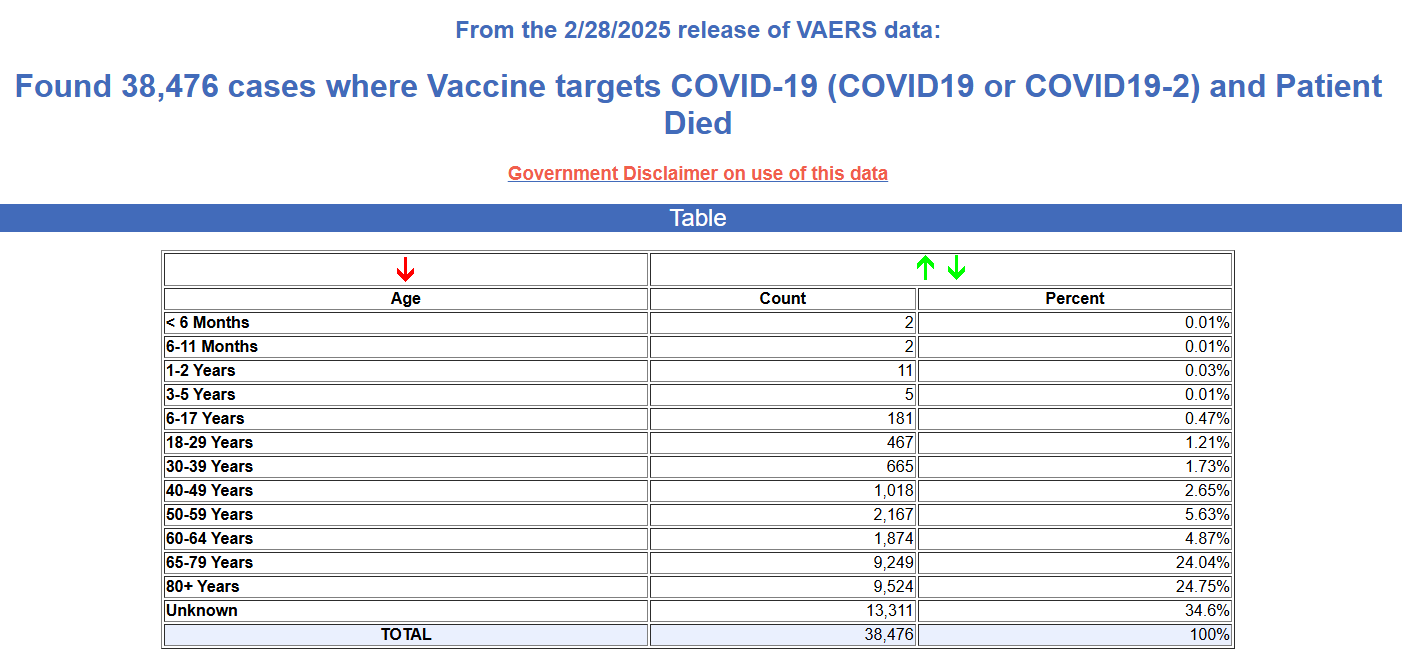Adverse Drug Reactions one of the leading causes of morbidity and mortality
A shocking compilation of statistics from before the so-called Covid, documents that those pushing their agenda of exclusive government-sanctioned medicine have been deceiving the public for years, allowing a tremendous amount of death and suffering.
https://web.archive.org/web/20070331210332/http://www.fda.gov/CDER/DRUG/drugReactions/default.htm
Preventable Adverse Drug Reactions: A focus on drug interactions
ADRs are one of the leading causes of morbidity and mortality in health care.
Studies conducted on hospitalized patient populations have placed much higher estimates on the overall incidence of serious ADRs.
These studies estimate that 6.7% of hospitalized patients have a serious adverse drug reaction with a fatality rate of 0.32%.2
If these estimates are correct, then there are more than 2,216,000 serious ADRs in hospitalized patients, causing over 106,000 deaths annually.
If true, then ADRs are the 4th leading cause of death—ahead of pulmonary disease, diabetes, AIDS, pneumonia, accidents, and automobile deaths.
These statistics do not include the number of ADRs that occur in ambulatory settings. Also, it is estimated that over 350,000 ADRs occur in U.S. nursing homes each year.3
However, whatever the true number is, ADRs represent a significant public health problem that is, for the most part, preventable.
(2Lazarou J, Pomeranz B, Corey PN. Incidence of adverse drug reactions in hospitalized patients: A meta-analysis of prospective studies. JAMA 1998;279:1200–1205. 3Gurwitz JH, Field TS, Avorn J, McCormick D, Jain S, Eckler M, et al. Incidence and preventability of adverse drug events in nursing homes. Am J Med 2000;109(2):87–94)
One estimate of the cost of drug-related morbidity and mortality is $136 billion annually,1 which is more than the total cost of cardiovascular or diabetic care in the United States. In addition, one out of 5 injuries or deaths per year to hospitalized patients may be as a result of ADRs.2
(Johnson JA, Bootman JL. Drug-related morbidity and mortality. A cost-of-illness model. Arch Intern Med 1995;155(18):1949–1956. 2Leape LL, Brennan TA Laird N, Lawthers AG ,Localio AR, Barnes BA et al. The nature of adverse events in hospitalized patients. Results of the Harvard Medical Practice Study II. N Engl J Med 1991;324(6):377–384.)
To exemplify this point, 64% of all patient visits to physicians result in prescriptions.1
Secondly, 2.8 billion prescriptions were filled in the year 2000. 2 That is about 10 prescriptions for every person in the United States.
Finally, the rate of ADRs increases exponentially after a patient is on 4 or more medications.3
(1Schappert SM. Ambulatory care visits to physician offices, hospital outpatient departments, and emergency departments: United States,1997. National Center for Health Statistics. Vital Health Stat. 1999;13(143).
2National Association of Chain Drug Stores. 2000 community pharmacy results. 2001. Alexandria, VA. 3Jacubeit T, Drisch D, Weber E. Risk factors as reflected by an intensive drug monitoring system. Agents Actions 1990;29:117–125.)
(1Friedman MA, Woodcock J, Lumpkin MM, Shuren JE, Hass AE, Thompson LJ. The safety of newly approved medicines: do recent market removals mean there is a problem? JAMA 1999; 281(18):1728–1734.)
One individual report CAN make a difference.
Many drug withdrawals began with one clinical report that initiated further investigation.
In the example case in this module, a single report ultimately led to the removal of terfenadine from the market. This report potentially saved many lives and led to a better understanding of the mechanism involved in causing torsades de pointes. Almost all drugs are now evaluated prior to being released on the market for their potential to induce cardiac arrhythmias, also as a result of this single case report.
(1Figueiras A, Tato F, Fontainas J, Gestal-Otero JJ. Influence of physicians’ attitudes on reporting adverse drug events: a case-control study. Med Care 1999;37(8):809-814. 2Eland IA, Belton KJ, van Grootheest AC, Meiners AP, Rawlins MD, Stricker BH. Attitudinal survey of voluntary reporting of adverse drug reactions. Br J Clin Pharmacol 1999;48(4):623–627. 3Chyka PA, McCommon SW. Reporting of adverse drug reactions by poison control centres in the US. Drug Saf 2000;23(1):87–93.)
Conclusions. -The incidence of serious and fatal ADRs in US hospitals was found to be extremely high. While our results must be viewed with circumspection because of heterogeneity among studies and small biases in the samples, these data nevertheless suggest that ADRs represent an important clinical issue. JAMA. 1998;279:1200-1205
we estimated that 702000 hospital patients in the United States experienced a serious ADRIn in 1994.
overall 2 216 000 hospital patients experienced a serious ADR in the United States in 1994.
Fatal ADRs appear to be between the fourth and sixth leading cause of death.
Their incidence has remained stable over the last 30 years.
We found that a high proportion of ADRs (76.2%) were type A reactions. This may suggest that many ADRs are due to the use of drugs with unavoidably high toxicity.
CONCLUSIONS Perhaps, our most surprising result was the large number of fatal ADRs. We estimated that in 1994 in the United States 106 000 (95% CI, 76 000-137 000) hospital patients died from an ADR. Thus, we deduced that ADRs may rank from the fourth to sixth leading cause of death.
Quoting from Gary Null, Ph.D., “Reverse Arthritis and Pain Naturally: A Proven Approach to an Anti-Inflammatory, Pain-Free Life”:
SO,
WHAT ABOUT COVID19 INJECTIONS???
https://medalerts.org/vaersdb/findfield.php?TABLE=ON&GROUP1=SYM&EVENTS=ON&VAX=COVID19











